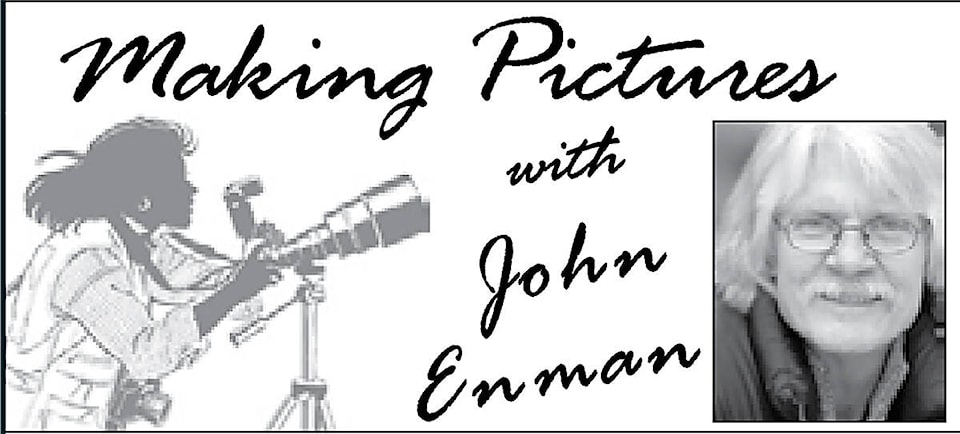I received a call this week from what sounded like a young voice, the caller asked if I could tell her if the camera she just received from a relative “was an LR. I knew what she meant and after asking her about the camera and replied to her that, “Yes, it is an SLR”.
I have written about the unique terminology that accompanies the exciting medium of photography before and how that ‘jargon’ completely confuses some.
I told her that she meant “SLR”. And that SLR stands for Single Lens Reflex. I also asked if she got any lenses with the camera. Reflex refers to the word ‘reflection’ that is the image one sees in the viewfinder and is bounced off a mirror in the optical path between the lens and the photographer’s eye. The digital version of that SLR, or single lens reflex camera, is called DSLR, or digital single lens reflex.
Some people, usually older, will refer to their digital camera as having a “chip”. One would think they mean the camera’s sensor or internal computer, but what they actually mean is the memory card.
The sensor is a device in the camera that is struck by light when the picture is taken and millions of pixels convert the light into electrons. Pixel means ‘picture elements’, and one megapixel is equal to one million pixels. The memory card is where the images are stored.
As long as I am writing about the cameras and what helps them produce pictures, I should mention that if a camera makes JPG files or ‘Joint Photographic Group’. If the camera makes RAW images (it’s not an acronym like JPG) it is using an image format that unlike the JPG has no in-camera processing and needs a ‘post processing program’ to make images.
When someone talks about ‘image resolution’ they are referring to the number of pixels in a digital photo, and that affects the image quality. When a tutorial suggests checking the ‘histogram’, that histogram is a graphic representation available on the LCD (rear screen/display) on the camera that shows the range of tones from dark to light in the last photo.
Even with today’s automated programmable cameras there is interest in what ISO (International Standards Organization) can be used. Those photographers that used to refer to a films’ speed as ASA 50 or 400, were actually talking about that particular film’s sensitivity to light; 50 needed more exposure, and 400 needed less.
The film box for years might have said 400 ASA (American Standards Association). I believe in the late 1980s it changed to a more international designation of light sensitivity as in ISO 400.
Today it is not necessary to rely on a particular film emulsion’s sensitivity as photographers just select (or let the camera select) the ISO desired. Back when film was used, 400 ISO was the highest many photographers would normally use. But with today’s cameras, ISO 1600 or even higher isn’t even a problem. The advantage of this is that photographers shooting in low light locations, like sports arenas, can shoot with out needing a flash.
We use words like ‘F-stop’, ‘zoom’ and a newly popular term – ‘Brokeh’, when we talk about lenses. The F-stop refers to the aperture or the little lens opening that lets more or less light in, and a zoom lens is really a multi focal length lens; focal length meaning the distance between the front focusing element (glass) of the lens, and the focal plane where the sensor focuses the image.
The recent interest in a lens’s brokeh has accompanied the popularity of using a lens with a wide-open aperture or the largest f-stop a particular lens has. (2.8 is larger than 11) Brokeh refers to that portion of an image that is out of focus. Good brokeh means that the out of focus area behind the subject is smooth and that particular lens gives a smooth non-descript blurry rendition.
I could have written several pages of terminology, but with the continuous changes in technology the list keeps growing. I am not sure how much many photographers care about words they don’t regularly use when discussing their passion with other photographers. However, the preceding terms (or jargon) are some that photographer probably use the most.
If I have missed some that are confusing don’t hesitate to send me an email or stop by my shop.
Stay safe and be creative. These are my thoughts for this week. Contact me at www.enmanscamera.com or emcam@telus.net.
_______________
Like us on Facebook
